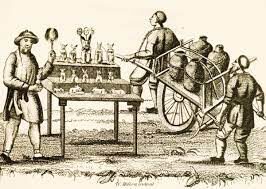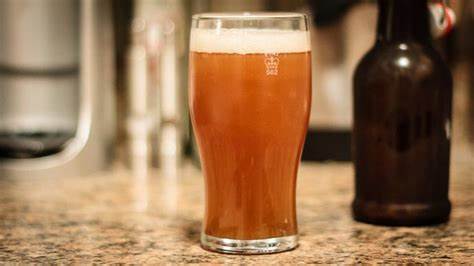Welcome to our guide to homemade beer brewing! In this article, we will provide you with a comprehensive guide on how to brew your own beer from the comfort of your own home.
Explanation of Homemade Beer Brewing
Homemade beer brewing refers to the process of making beer at home using basic ingredients and equipment.
The brewing process involves converting malted grains into a sugary liquid known as wort, boiling the wort with hops to add flavor and bitterness, fermenting the mixture with yeast to produce alcohol, and then carbonating the beer before it is bottled and aged.
Benefits of Homemade Beer Brewing
The benefits of homemade beer brewing are many. Not only does it allow you to experiment with different flavors and create unique blends, but it can also be a cost-effective way to enjoy high-quality beer without breaking the bank.
Additionally, it can be a fun and rewarding hobby that lets you get creative in the kitchen and produce something that you can enjoy with friends and family.
Brief History of Homemade Beer Brewing

The history of homemade beer brewing can be traced back to ancient times, when beer was first discovered by the Sumerians in Mesopotamia around 4000 BC.
Since then, beer has been a staple beverage in many cultures around the world, including the UK, where it has a long and storied history of brewing and consuming various types of beer.
In recent years, the craft beer movement has exploded in popularity, leading to a resurgence in homemade beer brewing as more and more people seek to create their own unique and delicious blends.
A Step-by-Step Guide to Home Beer Brewing
Sanitization

Sanitization is critical to ensure that no unwanted bacteria or microbes contaminate your beer during the brewing process, which can affect the taste and quality of your final product.
Boiling the Wort
Once your equipment is sanitized, the next step is to create the wort. This involves steeping malted grains in hot water to extract their sugars and flavors.
Once the sugars have been extracted, the mixture is boiled with hops to add flavor and bitterness. The length of time the mixture is boiled can vary depending on the recipe and desired flavor profile.
Fermentation
After the wort has been boiled and cooled, it is time to add yeast to the mixture. The yeast will consume the sugars in the wort and produce alcohol and carbon dioxide.
This process takes place in a fermentation vessel, which is typically a large plastic or glass container with an airlock to allow carbon dioxide to escape.
Carbonation

Once fermentation is complete, it’s time to carbonate the beer. Carbonation can be achieved naturally through a process called bottle conditioning, where additional sugar is added to the beer before bottling.
Alternatively, carbonation can be achieved through forced carbonation using a keg and CO2 tank.
Bottling and Aging
Finally, the beer is ready to be bottled and aged. Bottling involves transferring the beer from the fermentation vessel to individual bottles, adding a small amount of additional sugar to create carbonation, and capping the bottles.
The beer is then aged for several weeks to several months, depending on the desired flavor profile. This allows the flavors to mature and develop, resulting in a delicious and complex final product.
Ingredients Needed for Homemade Beer Brewing
Brewing your own beer at home requires a few essential ingredients. Here are the most important ones:
- Water
Water is the primary ingredient in beer, making up about 90% of the finished product. It is important to use clean, filtered water to avoid any impurities that could negatively impact the flavor of the beer.
- Malt Extract
Malt extract is a concentrated syrup made from malted grains such as barley, wheat, or rye. It provides the fermentable sugars necessary for the yeast to convert into alcohol during fermentation.
- Hops
Hops are a type of flower used to add bitterness, flavor, and aroma to beer. They also act as a natural preservative and help balance out the sweetness of the malt.
- Yeast
Yeast is the microorganism responsible for converting the sugars from the malt extract into alcohol and carbon dioxide during fermentation. There are different types of yeast strains available that can impact the flavor and aroma of the beer.
- Specialty Grains and Adjuncts
Specialty grains and adjuncts are optional ingredients that can be added to the beer to achieve specific flavors and colors. Examples include roasted barley for stouts, wheat for hefeweizens, and fruit for fruit beers.
Equipment Needed for Homemade Beer Brewing
Home brewing requires a few essential pieces of equipment to make the process easier and safer. Here are the five pieces of equipment you will need:
1: Brew Kettle
The brew kettle is where you will boil the wort, the sweet liquid that becomes beer after fermentation. A 5- to 10-gallon pot made of stainless steel or enamel-coated steel is recommended.
2: Fermentation Vessel
This is where the magic happens. The fermentation vessel can be a plastic bucket or a glass carboy. It must be sanitized and have an airtight seal to prevent contamination.
3: Airlock and Stopper
The airlock is a device that allows carbon dioxide to escape during fermentation without letting outside air in. It is attached to the fermentation vessel with a stopper.
4: Bottles and Bottle Cappers
After fermentation is complete, your beer will need to be bottled. You can use 12-ounce glass bottles or plastic PET bottles. You will also need a bottle cap to seal the bottles.
5: Thermometer and Hydrometer
A thermometer is needed to monitor the temperature during the brewing process. A hydrometer measures the specific gravity of the beer to determine the alcohol content and fermentation progress.
Summary
A. Benefits of homemade beer brewing: Brewing your own beer at home is not only a fun and rewarding hobby, but it also allows you to customize your brew to your liking. You can experiment with different ingredients and flavors, creating unique and personalized beers that can’t be found in stores.
B. Importance of experimentation and creativity in brewing: One of the best things about homemade beer brewing is the opportunity to experiment and be creative. Don’t be afraid to try new things, mix up ingredients, and create something truly unique.
C. Final thoughts and encouragement for aspiring home-brewers: Homemade beer brewing can be a bit intimidating at first, but with some practice and patience, anyone can learn to make delicious beer. Don’t be afraid to ask for help, join a local brewing club, and most importantly, have fun with the process!
Additional Resources:
- “The Complete Joy of Homebrewing” by Charlie Papazian
- “How to Brew” by John Palmer
- American Homebrewers Association (AHA) website: https://www.homebrewersassociation.org/
- Brew Your Own Magazine: https://byo.com/
- Homebrewtalk forum: https://www.homebrewtalk.com/

